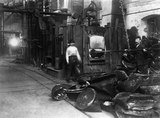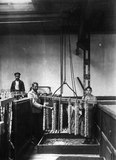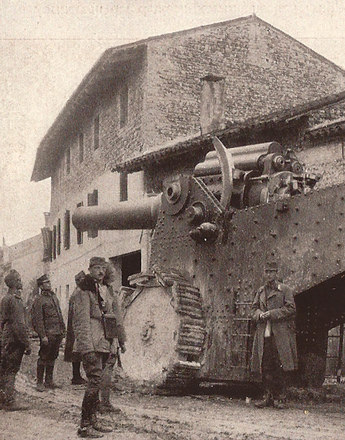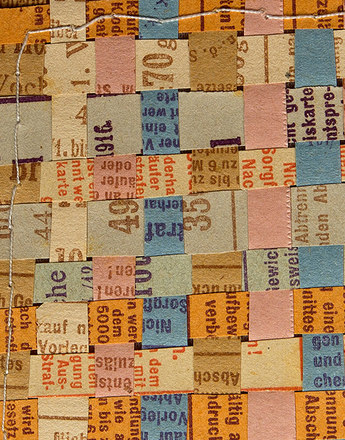-

Melting old copper in the copper refinery at Neu-Erlaa, Vienna, photo around 1917
Copyright: Technisches Museum Wien
Partner: Technisches Museum Wien -

Copper sulphate crystals in the crystallisation vats; copper refinery, Neu Erlaa, Vienna, photo, around 1917
Copyright: Technisches Museum Wien
Partner: Technisches Museum Wien
Mining and metallurgy were flourishing economic sectors, but they were nevertheless inadequately equipped for a protracted all-out war, and rare and vital metals had to be replaced increasingly by other more abundant ones.
Metal has always been essential in war – for ammunition and weapons, spears, swords and bayonets, and for armour. In modern weapon technology the most important metals are iron and low-carbon steel. In 1913 metallurgists also managed for the first time to make stainless steel.
The demand for metals exploded soon after the outbreak of war, and there was soon a shortage of non-ferrous metals. Some of them, like nickel, manganese and vanadium, were used in steelmaking. Copper and its alloys were important for ammunition, and lead was also used extensively for this purpose. Tin was used to make cans for the military. Extraction was stepped up at the Mitterberg copper mine in Salzburg and in Bleiberg, Carinthia. In November 1914 a company, Metallzentrale A.–G., was founded to buy metals and substances containing metals and process them for the military. A register was also established with a metal inventory of 13,000 industrial and 20,000 commercial enterprises. All superfluous metal was requisitioned and sometimes replaced by other metals. This included engraved copper rollers from textile printing works. The demand for metal is illustrated by an estimate at the time stating that Austrian troops expended 1.5 billion rounds of ammunition and 12 million artillery shells in the first two years of the war.
A number of electrolysis works were established to produce high-purity copper for electric cables. One in Neu Erlaa, Vienna, was owned by Bernhard Wetzler, a wealthy industrialist and sometime aristocrat, who also owned several military canning factories. In 1916 he established a gunpowder factory together with the Škoda works.
Aluminium was another up-and-coming metal. Austria was in a good position to make it. There were abundant deposits of bauxite, one of the main ingredients, in the south of the monarchy, from Dalmatia to Carniola. One major pioneer in the industrial manufacture of aluminium was Karl Josef Bayer from Bielitz [Bielsko] in Austrian Silesia. In spite of Bayer’s energy, however, aluminium production remained a poor relation. When war broke out there was only one works in Salzburg province, which obtained its raw materials exclusively from France. And yet the silvery lightweight metal had important properties: it was a very good conductor of electricity and could be used instead of copper, which was in short supply. Aluminium powder could also be fired to high temperatures for the welding of iron, which was very useful in particular in shipbuilding and repair. Boats for military use were also made. Despite this, throughout the war it was a scarce commodity.
Translation: Nick Somers
Bayer, Wolfram: „So geht es…“. L’alumine pure de Karl Bayer et son intégration dans l’industrie de l’aluminium, in: Cahiers d’histoire de l’aluminium 49 (2012), 21–45
Weitensfelder, Hubert: „Kriegsware“. Ersatzstoffe in Produktion und Alltag, in: Pfoser, Alfred/Weigl, Andreas (Hrsg.): Im Epizentrum des Zusammenbruchs. Wien im Ersten Weltkrieg, Wien 2013, 172–179
-
Chapters
- Chicory, peat & Textilit: surrogates before the war
- The age of iron
- Bells for bullets: metal collection
- Fragile clothing: textiles and paper fabrics
- Well shod? Tanning agents and leather
- Rubber goods: elastic and essential
- From far and near: resins and resin products
- The 1918 surrogate exhibition in the Prater




